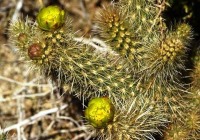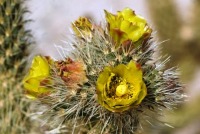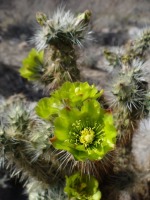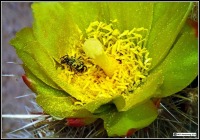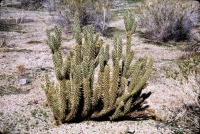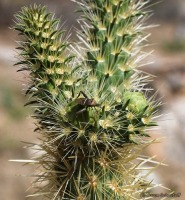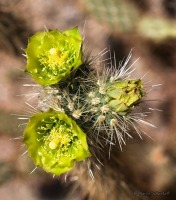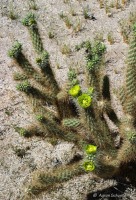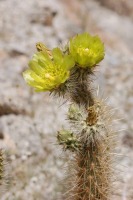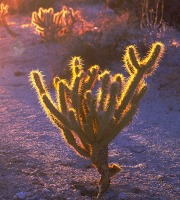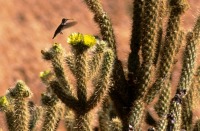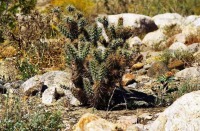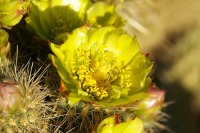(G.B. Wolf) J. Rebman & D.J. Pinkava. 1996. Haseltonia 4: 103.
Holotype; Holotype (G. ganderi var. catavinensis); Isotype; Herbarium sample; Herbarium sample; Herbarium sample; Herbarium sample; Herbarium sample
Original description
Flora of North America treatment
What is Cylindropuntia ganderi?
Cylindropuntia ganderi is a cholla that occurs in a variety of habitats from 100 to 1000 m elevation in the Sonoran desert of southern California and Baja California, Mexico. It is particularly common in Anza-Borrego Desert State Park.
Details
G. ganderi is an erect, basally branching shrub growing to 1.5 m tall. The stems are firmly attached and 5 to 26 cm long by 1.7 to 4.5 cm wide. Each areole has 11 to 28 white, yellow, tan, or occasional red-brown spines which obscure the stems. The spines age brown to black, and the sheaths are white to golden. The flowers are yellow-green, often with red tips. The filaments are yellow-green, the styles are cream to yellow, and the stigma is white to greenish. The fruits are yellowish, dry, and spiny. Cylindropuntia ganderi is diploid (2n = 22).
Besides the typical variety, one additional variety, Cylindropuntia ganderi var. catavinensis, is also currently recognized. This variety occurs in central Baja California, being particularly abundant near the town of Cataviña. It differs from the typical variety in having more spines, which are cream to pinkish-orange in color, along with its more southern distribution which does not overlap with the typical variety.
Cylindropuntia ganderi var. ganderi intergrades with Cylindropuntia californica var. parkeri at the north end of its range. Cylindropuntia ganderi was originally described as a variety of G. acanthocarpa. However, G. ganderi lacks the variable flower coloration, red filaments, and pink to red style of G. acanthocarpa. It is, therefore, most likely much more closely related to G. californica and G. echinocarpa.
Some images below were provided by Bill Sullivan at the Anza-Borrego Natural History Association.
